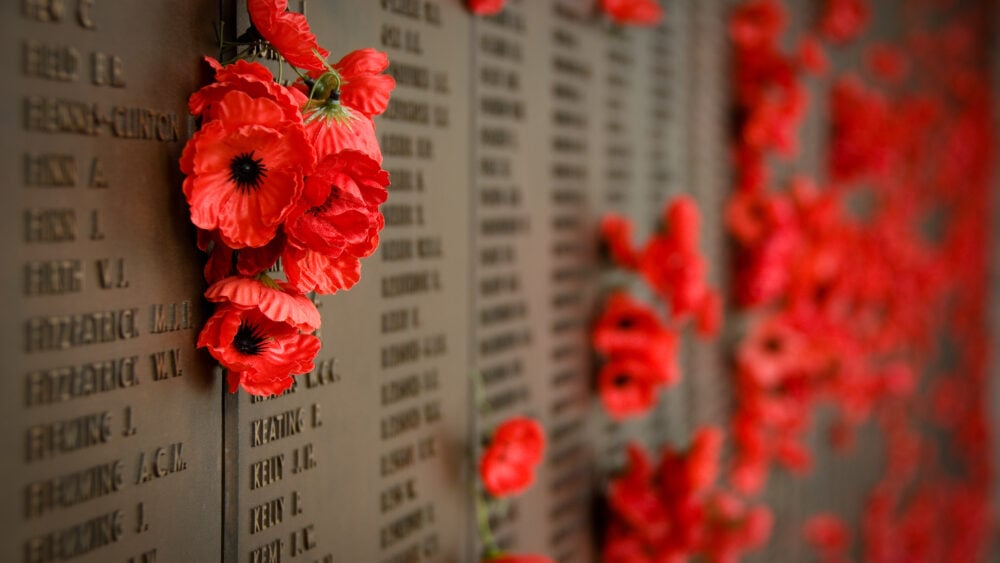Poppy Red honours our dead on Remembrance Day
“In Flanders fields the poppies blow, Between the crosses, row on row”
In May 1915, a Canadian soldier presided over the funeral of a friend in northern Belgium, noting how quickly the blood-red poppies grew around the graves of those who had died.
In soldiers’ folklore, the vivid red of the poppy came from the blood of their comrades soaking the ground.
The next day, Lieutenant-Colonel John McCrae penned a poem – In Flanders Fields – in honour of his friend, describing in vivid detail the red poppies blooming in the very same place where death and destruction were wrought.
In Flanders fields the poppies blow
Between the crosses, row on row,
That mark our place: and in the sky
The larks, still bravely singing, fly
Scarce heard amid the guns below.
We are the Dead. Short days ago
We lived, felt dawn, saw sunset glow,
Loved and were loved, and now we lie
In Flanders fields.
Take up our quarrel with the foe:
To you from failing hands we throw
The torch; be yours to hold it high.
If ye break faith with us who die
We shall not sleep, though poppies grow
In Flanders fields.
John McCrae (1872–1918)
In soldiers’ folklore, the vivid red of the poppy came from the blood of their comrades soaking the ground.
…she vowed to always wear a red poppy as a symbol of remembrance for those who served in the war.
The poem was immediately popular among soldiers and civilians, and was published in a London-based magazine later that year to critical acclaim. It was used to recruit more soldiers and garner support for the war.
Three years later, American professor Moina Michael wrote a response to McCrae’s poem called We Shall Keep the Faith and, deeply moved by the opening lines of McCrae’s poem, she vowed to always wear a red poppy as a symbol of remembrance for those who served in the war.
Oh! you who sleep in Flanders Fields,
Sleep sweet – to rise anew!
We caught the torch you threw
And holding high, we keep the Faith
With All who died.
We cherish, too, the poppy red
That grows on fields where valor led;
It seems to signal to the skies
That blood of heroes never dies,
But lends a lustre to the red
Of the flower that blooms above the dead
In Flanders Fields.
And now the Torch and Poppy Red
We wear in honor of our dead.
Fear not that ye have died for naught;
We’ll teach the lesson that ye wrought
In Flanders Fields.
Moina Michael (1869-1944)
After the war, Michael pursued the idea of selling silk poppies to raise money to support disabled war veterans. The idea spread to all the countries of the British Empire within three years, and poppies were first worn at Remembrance Day ceremonies in 1921.
Remembrance Day itself was the brainchild of King George V of England, who wanted to remember the members of the armed forces who died in the line of duty.
The first Remembrance Day was held in 1919, exactly one year after the signing of the armistice treaty that ended the First World War (although the war didn’t officially end until the signing of the Treaty of Versailles on 28 June 1919).
Australians will observe one minute’s silence at 11am on Friday 11 November 2016, in memory of those who died or suffered in all wars and armed conflicts. Find out more, here.








